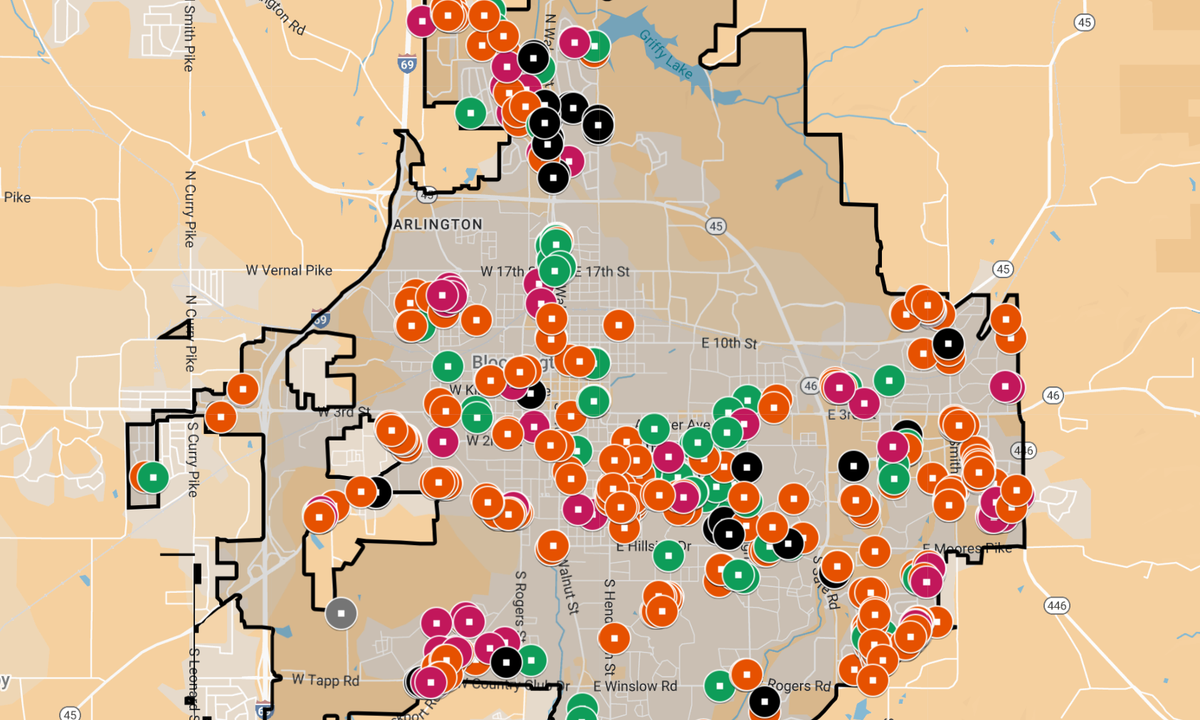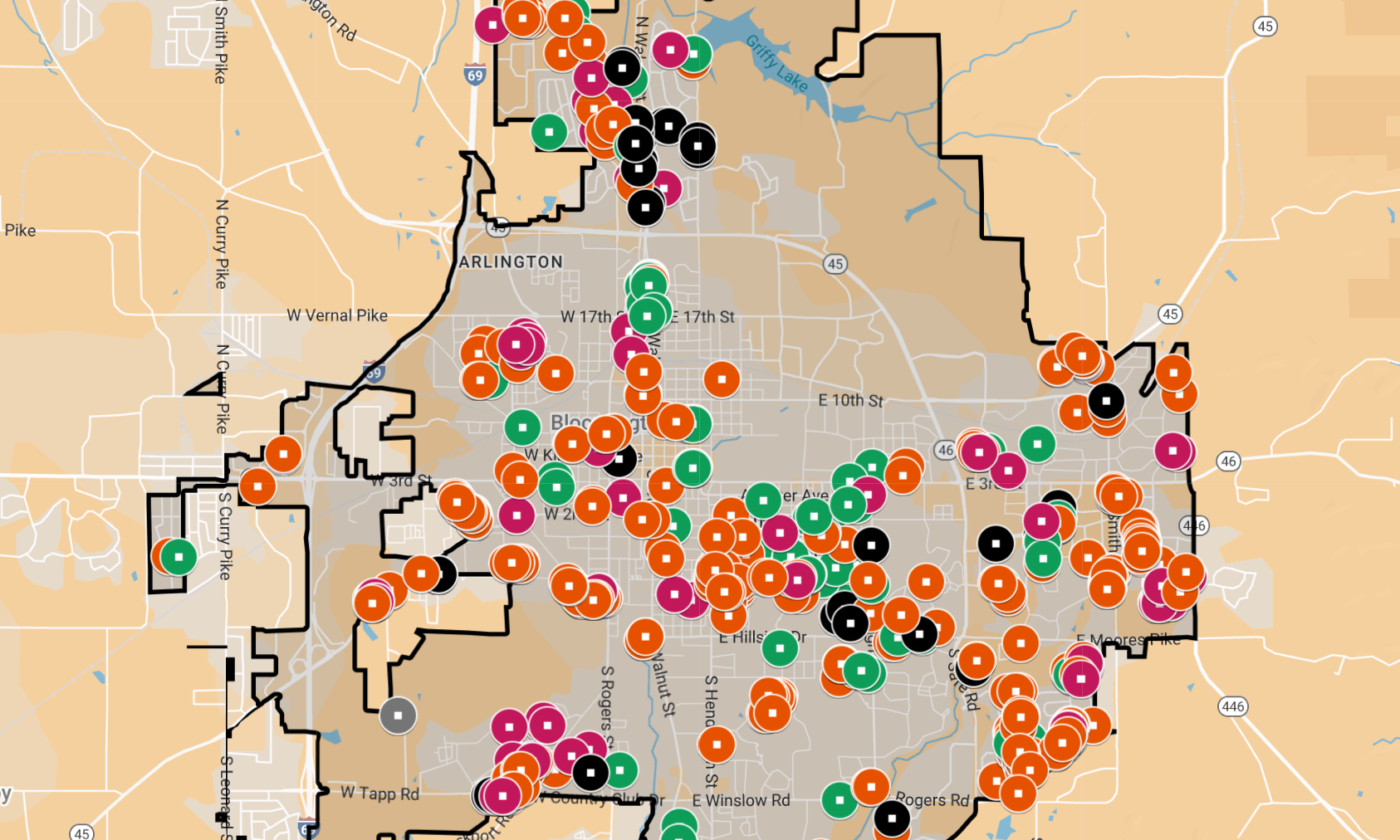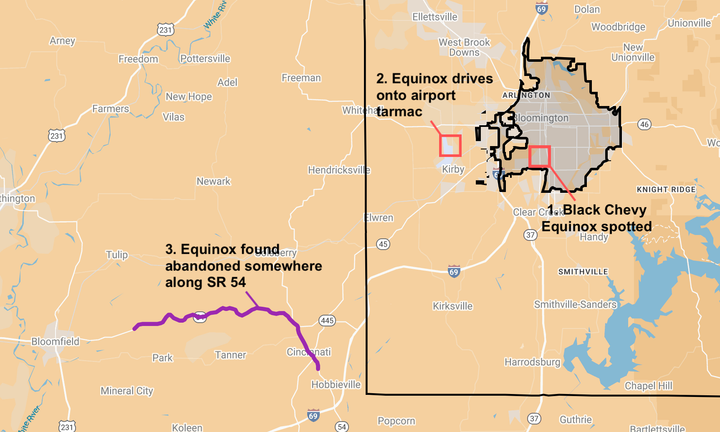Bloomington seeks $35K state grant to update decade-old ash tree management plan
Monroe County’s board of health passed a resolution in support of the city of Bloomington’s application for a $35,000 grant from the Indiana DNR to update the city’s management plan for ash trees. Bloomington urban forester Haskell Smith hopes to have the application done by the end of this week.


In the first week of October, Monroe County’s board of health passed a resolution in support of the city of Bloomington’s application for a $35,000 grant from the Indiana Department of Natural Resources to update the city’s management plan for ash trees.
The human connection to the board of health came through George Hegeman, who serves as a member of the board as well as a member of the city’s tree commission. Hegeman is a retired Indiana University professor of microbiology.
As for the connection between health and ash trees, Hegeman told his colleagues on the board that trees generally help mitigate urban heat environments and control storm water, saying they have “good public health effects.”
Bloomington urban forester Haskell Smith indicated to the B Square that he hopes to have the grant application wrapped up by the end of this week.
Ash trees warrant special consideration through a grant application, for the same reason that the city has a management plan specifically for ash trees—because they were hit by the emerald ash borer (EAB) more than a decade ago. The EAB was first detected in the U.S. near Detroit in 2002, and has since spread to more than 30 states, including Indiana, killing hundreds of millions of ash trees across North America.
The funding would come through the state’s Community and Urban Forestry division under its State Urban Forest Resilience (SUFR) grant program, which supports cities working to manage pests like the EAB. If the city receives the grant, the spending would be spread across two years, with most of the work planned for 2026.
Bloomington’s online inventory of trees in the public right-of-way currently includes 735 ash trees. According to Smith, the grant would allow Bloomington to re-assess roughly 500 of those ash trees, update its management plan, and begin the first round of removals and replacements for trees that can’t be saved.
In the current inventory, only about 100 of the ash trees are rated in “good” condition. The others are all “fair”, “poor”, or “dead.”
About 250 ash trees have been evaluated in the past two years, but the rest haven’t been systematically checked since 2019, when the city’s previous 10-year plan lapsed, according to Smith.
About the need to update the plan, Smith wrote in response to emailed questions: “With what we knew then, and what we know now, there are several large differences that need to be addressed.” He added, “It’s a decade later, and so much has changed.”
Bloomington started treating ash trees against EAB in 2014, and has treated more than 100 trees each year on a three-year rotation. The insect was first detected locally in the early 2010s, according to Smith. Despite the treatments, losses of some trees have continued each year.
The most recent payment for ash tree treatments recorded in the city’s online check register is $19,800 to Mother Nature Landscaping in May 2024. The treatments involve injecting a pesticide directly into the tree’s vascular system, through small holes drilled at the base of the trunk. From there, the chemical moves upward spreading into the branches and leaves.
When preparing the 2024 treatment contract, Haskell noticed that the lists of trees scheduled for treatment in Year 2 and Year 3 had “considerably shrunk” as the population declined. That allowed the city to combine those treatment cycles, skip 2025, and redirect those funds toward other forestry needs. But the reduced number of surviving trees highlighted the need for a comprehensive update to the plan, Smith said.
The proposed grant would help fund both treatment and replacement work in 2026 and 2027, and also cover the cost of producing a new 10-year ash management plan. The plan will rank trees by priority for treatment or removal and identify areas where replacements are most needed.
The city’s existing EAB treatment budget will serve as a local match for the DNR grant. Once drafted, the new ash tree management plan will be reviewed by the Bloomington tree commission and the board of park commissioners.




Comments ()